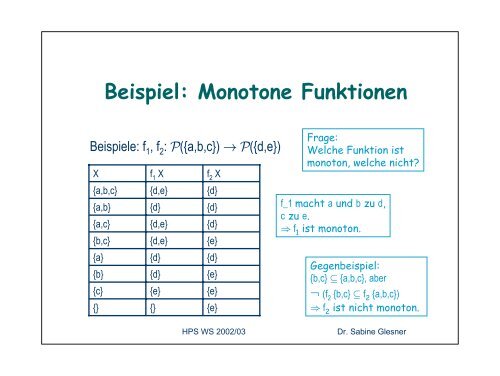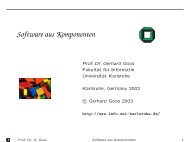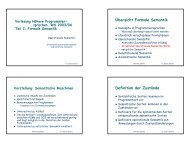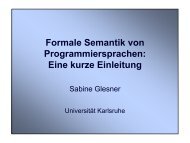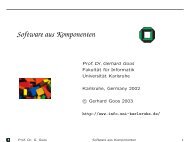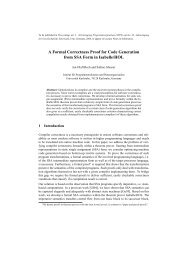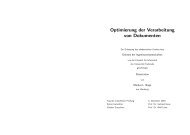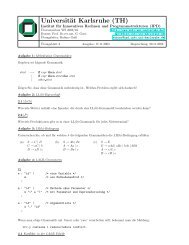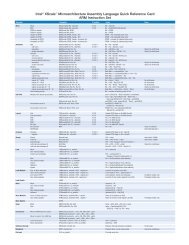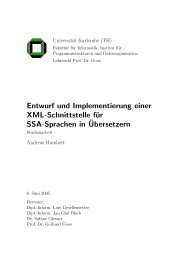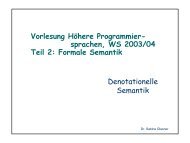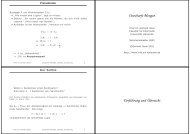Formale Semantik Denotationelle Semantik
Formale Semantik Denotationelle Semantik
Formale Semantik Denotationelle Semantik
Erfolgreiche ePaper selbst erstellen
Machen Sie aus Ihren PDF Publikationen ein blätterbares Flipbook mit unserer einzigartigen Google optimierten e-Paper Software.
Beispiel: Monotone Funktionen<br />
40<br />
Beispiele: f 1 , f 2 : P({a,b,c}) → P({d,e})<br />
X<br />
{a,b,c}<br />
{a,b}<br />
{a,c}<br />
{b,c}<br />
{a}<br />
{b}<br />
{c}<br />
{}<br />
f 1<br />
X<br />
{d,e}<br />
{d}<br />
{d,e}<br />
{d,e}<br />
{d}<br />
{d}<br />
{e}<br />
{}<br />
f 2<br />
X<br />
{d}<br />
{d}<br />
{d}<br />
{e}<br />
{d}<br />
{e}<br />
{e}<br />
{e}<br />
HPS WS 2002/03<br />
Frage:<br />
Welche Funktion ist<br />
monoton, welche nicht?<br />
f_1 macht a und b zu d,<br />
c zu e.<br />
⇒ f 1<br />
ist monoton.<br />
Gegenbeispiel:<br />
{b,c} ⊆ {a,b,c}, aber<br />
¬ (f 2<br />
{b,c} ⊆ f 2<br />
{a,b,c})<br />
⇒ f 2<br />
ist nicht monoton.<br />
Dr. Sabine Glesner


